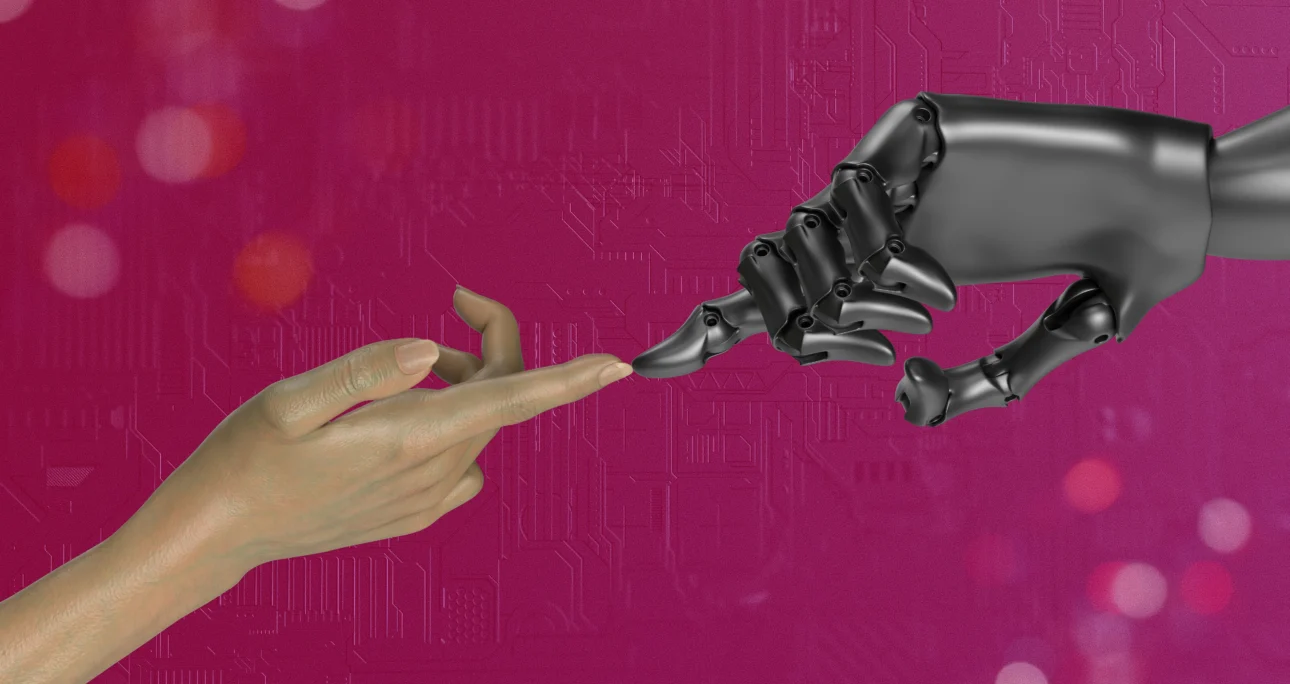Here’s something that might surprise you: While you were scrolling through social media this morning, AI probably recommended what you saw, optimised the route to work, and maybe even helped write some of the articles you read.
We’re not talking about some distant future anymore. We’re living in it.
I’ve been tracking AI developments for years, and 2025 feels like the year everything clicked into place. The technology that seemed impossibly complex just a few years ago is now as accessible as downloading an app. And honestly? It’s both exciting and a little terrifying.
Let me walk you through where we actually stand with AI right now, what’s coming next, and why you should care (even if you think you don’t).
Why This AI Moment Is Different
Remember when everyone said “the internet changes everything” back in the ‘90s? Most people rolled their eyes. Then suddenly, we couldn’t imagine life without it.
That’s exactly where we are with AI in 2025.
But here’s what makes this different from previous tech hype cycles: AI isn’t just changing one industry — it’s changing how we think, create, and solve problems.
I was talking to a friend who runs a small marketing agency last week. Two years ago, creating a professional video ad would cost her thousands and take weeks. Now? She generates concepts with AI in minutes, creates visuals with a text prompt, and has a working prototype ready for client feedback the same day.
That’s not a rare story anymore. It’s becoming the norm.
The Three Forces Making AI Unstoppable Right Now
- Computing power got ridiculously cheap — What required a supercomputer in 2020 now runs on your laptop
- Data became the new oil — And we’re sitting on an ocean of it
- Open-source happened — The biggest AI models are now freely available to tinker with
The result? We’ve democratised intelligence itself.
What AI Can Actually Do in 2025 (No Hype, Just Reality)
Let’s cut through the marketing fluff and talk about what AI can genuinely do right now. I’ve tested most of these myself, and the results still feel like magic sometimes.
Creating Content That Doesn’t Suck
AI writing has moved way beyond those robotic product descriptions that fooled nobody. I’m talking about:
- Code that actually works — I’ve watched developers solve complex problems by simply describing what they want in plain English
- Stories that make you cry — AI can now write fiction with genuine emotional depth
- Marketing copy that converts — Because it’s trained on what actually works, not what we think works
Personal story: I challenged GPT-4 to write a poem about my grandmother’s cooking. Not only did it capture the warmth and nostalgia I was hoping for, but it used metaphors I never would have thought of. My mom cried when I read it to her.
Visual Magic That’s Actually Practical
Forget the AI art that looks like a fever dream. Modern AI creates visuals that are genuinely useful:
- Professional photography without a photographer
- Custom illustrations that match your exact vision
- Product mockups that save weeks of design time
- Video editing that happens faster than you can explain what you want
The other day, I needed a header image for a blog post about sustainable technology. Instead of spending hours on stock photo sites, I generated exactly what I wanted in 30 seconds: “A wind turbine made of circuit boards against a sunset sky, photorealistic, warm lighting.” Perfect. Done.
Data Analysis That Actually Makes Sense
Here’s where AI really shines — making sense of information overload:
- Pattern recognition in messy data that humans would never spot
- Predictive insights that actually prove accurate
- Personalization that doesn’t feel creepy (well, mostly)
- Real-time decision making in situations too complex for human processing
A logistics company I consulted for uses AI to optimize delivery routes in real-time. Not just “turn left here” optimization — we’re talking about adjusting for weather, traffic, driver preferences, fuel costs, and customer priority levels simultaneously. Their delivery times dropped by 40%.
The Future Isn’t What We Expected (And That’s Good News)
Everyone’s obsessing over when we’ll get artificial general intelligence (AGI) — AI that’s as smart as humans at everything. But honestly? That’s the wrong question.
The real question is: How do we make AI that’s genuinely useful for humans?
What’s Actually Coming by 2030
Based on current development trends and conversations with researchers, here’s what I’m confident we’ll see:
Specialised AI That’s Scary Good Instead of one super-brain, we’re getting thousands of AI systems that are absolutely brilliant at specific things. Medical AI that diagnoses rare diseases better than specialists. Legal AI that reviews contracts faster than entire law firms. Creative AI that collaborates with artists to produce impossible beauty.
AI That Understands Context Current AI is like a brilliant person who just woke up from a coma every time you talk to them. Future AI will remember your preferences, understand your goals, and adapt to your communication style over time.
Physical AI Integration Your home, car, and workplace will have embedded AI that anticipates your needs without being asked. Not the clunky smart home devices we have now — truly intelligent environments that learn and adapt.
The Quantum Leap Everyone’s Ignoring
While everyone’s focused on making AI smarter, the real breakthrough will be making it more collaborative.
Picture this: Instead of AI replacing human workers, we get human-AI teams where each partner does what they’re best at. The human provides creativity, ethics, and emotional intelligence. The AI provides processing power, pattern recognition, and infinite patience.
I’ve seen early versions of this in action, and it’s genuinely beautiful to watch.
Let’s Talk About the Elephant in the Room: AI’s Dark Side
I’d be lying if I said AI was all sunshine and productivity gains. There are real problems we need to face head-on.
The Job Situation (It’s Complicated)
Yes, AI will eliminate some jobs. Customer service, basic accounting, simple writing tasks — these are already being automated away.
But here’s what the headlines miss: AI is also creating entirely new types of work. AI trainers, human-AI interaction designers, AI ethics specialists, algorithmic auditors — these jobs didn’t exist five years ago.
My take? The transition will be bumpy, but history suggests we’ll adapt. The printing press put scribes out of work but created entire publishing industries. AI will likely follow a similar pattern.
The real challenge isn’t job loss — it’s making sure the transition is fair and that people have the support they need to adapt.
Privacy in the Age of AI
AI’s hunger for data creates surveillance capabilities that would make Orwell nervous. Every click, purchase, and conversation can be analyzed for insights about your personality, preferences, and predictions about your future behavior.
The uncomfortable truth: We’re trading privacy for convenience, often without realising it.
What I do about it: I’m selective about which AI services I use, read privacy policies (yes, really), and use AI tools that process data locally when possible.
The Bias Problem
AI systems learn from human data, which means they inherit our prejudices and blind spots. We’ve seen AI hiring tools discriminate against women, facial recognition systems work poorly for people of color, and loan approval algorithms perpetuate economic inequality.
The good news: We’re getting better at detecting and correcting these biases. The bad news: It requires constant vigilance.
How AI Is Reshaping Industries (With Real Examples)
Let me share some stories from the trenches about how AI is actually changing different sectors.
Healthcare: Where AI Saves Lives
Dr. Sarah Chen (not her real name) told me about using AI for radiology at her hospital. The AI doesn’t replace radiologists — it acts like a really good resident who never gets tired and catches things human eyes might miss.
“Last month, the AI flagged a tiny spot on a chest X-ray that I initially thought was nothing,” she said. “Turned out to be early-stage lung cancer. We caught it because the AI had seen patterns in thousands of similar cases.”
AI in healthcare isn’t just about diagnosis. It’s:
- Accelerating drug discovery from decades to years
- Personalizing treatment plans based on genetic data
- Monitoring patients remotely and predicting health issues
- Making mental health support accessible 24/7
Finance: Money Meets Machine Learning
I spoke with James Rodriguez, a financial advisor who uses AI to analyze market trends. “It’s like having a team of analysts who never sleep,” he told me. “The AI processes news, earnings reports, social media sentiment, and economic indicators faster than humanly possible.”
The result? His clients’ portfolios have consistently outperformed market averages for the past two years.
But it’s not just about making money:
- AI detects fraud in milliseconds
- Provides personalized financial advice to people who couldn’t afford human advisors
- Automates compliance and reduces regulatory risks
- Makes credit accessible to underserved communities
Education: Learning Gets Personal
Maria Gonzalez teaches 5th grade in Phoenix. When she started using AI tutoring tools, she was skeptical. “I thought it would replace human connection in learning,” she admitted.
Instead, it freed her up to focus on what humans do best: mentoring, encouraging, and inspiring students.
The AI handles:
- Adapting to each student’s learning pace
- Identifying knowledge gaps before they become problems
- Providing instant feedback on assignments
- Creating personalized practice problems
“Now I can spend time helping kids develop critical thinking and creativity instead of grading worksheets,” Maria said.
The Challenges That Keep Me Up at Night
As excited as I am about AI’s potential, I’m not naive about the risks. Here are the issues that genuinely worry me.
The Control Problem
As AI systems become more powerful, ensuring they do what we actually want becomes harder. It sounds simple until you try to define exactly what “good outcomes” look like in complex situations.
Example: An AI managing traffic flow might optimize for speed but ignore air quality. An AI recommending medical treatments might prioritize statistical outcomes over individual patient preferences.
We need AI systems that understand human values, not just human commands.
The Concentration of Power
Right now, the most powerful AI systems are controlled by a handful of tech companies. That’s… problematic.
What happens when AI capabilities become essential for economic competitiveness, but only a few organizations have access to them?
My hope: Open-source AI development continues to democratize access. My fear: Regulatory capture by incumbent players who want to maintain their advantage.
The Authenticity Crisis
When AI can generate realistic text, images, and videos, how do we know what’s real anymore?
We’re already seeing AI-generated disinformation, deepfake videos, and synthetic personas on social media. This isn’t just about “fake news” — it’s about the fundamental nature of truth in a digital world.
Personal confession: Sometimes I catch myself wondering if a piece of content was created by AI, even when it doesn’t matter. That constant questioning is exhausting.
How to Thrive in an AI World (Practical Advice)
Okay, enough doom and gloom. Let’s talk about how to actually succeed alongside AI.
For Your Career
Don’t try to compete with AI. Complement it.
The skills that will matter most:
- Creative problem-solving — AI can optimize known solutions, but humans excel at defining new problems
- Emotional intelligence — Understanding and connecting with other humans remains uniquely valuable
- Ethical reasoning — Making judgments about right and wrong in complex situations
- Systems thinking — Seeing big-picture connections that AI might miss
- Adaptability — Learning new tools and approaches quickly
My personal strategy: I spend 30 minutes every day experimenting with new AI tools. Not to become an expert, but to understand what’s possible and how it might change my work.
For Your Business
Start small, think big.
Don’t try to revolutionise everything at once. Pick one process that’s repetitive and time-consuming. Test AI solutions. Learn what works. Scale gradually.
Questions to ask:
- Where do we spend time on tasks that don’t require human creativity?
- What data do we have that might contain hidden insights?
- How can we improve customer experience without increasing costs?
- Where are our biggest bottlenecks and information gaps?
For Your Life
Use AI to amplify your human capabilities, not replace them.
I use AI for:
- Research assistance — Getting up to speed on new topics quickly
- Writing support — Improving clarity and catching errors
- Learning — Explaining complex concepts in ways I can understand
- Creative projects — Generating ideas when I’m stuck
I don’t use AI for:
- Important decisions without human verification
- Personal communications that should feel genuine
- Creative work where the process matters as much as the outcome
- Anything involving personal or sensitive information
What’s Next? (And Why It Matters to You)
Here’s what I think will happen in the next few years, and why you should care:
AI Becomes Invisible
Just like the internet stopped being something we “go on” and became the invisible infrastructure of modern life, AI will fade into the background. It’ll be embedded in everything, working quietly to make life better.
What this means for you: Stop thinking about “AI adoption” and start thinking about “intelligent everything.”
Human Skills Become More Valuable
As AI handles routine cognitive tasks, uniquely human abilities become premium skills. Creativity, empathy, wisdom, and ethical judgment will be in higher demand than ever.
What this means for you: Invest in developing these “human” skills now.
New Forms of Human-AI Collaboration
We’ll see entirely new ways of working where humans and AI systems collaborate in real-time, each contributing their unique strengths.
What this means for you: Get comfortable working alongside AI systems. They’re not your replacement — they’re your new teammates.
My Final Thoughts (And a Personal Request)
I started writing this article because I kept having the same conversation with friends, family, and colleagues: “What’s all this AI stuff really about, and should I be worried?”
After months of research, testing, and real-world observation, here’s my honest answer:
AI in 2025 is the most powerful tool humanity has ever created. Like all powerful tools, it can be used to build or destroy, to liberate or oppress, to solve problems or create new ones.
The outcome isn’t predetermined. It depends on the choices we make — as individuals, companies, and societies.
My ask: Don’t be a passive observer of the AI revolution. Engage with it. Experiment with AI tools. Ask questions about how they work and what they’re optimised for. Demand transparency from companies building AI systems. Vote for leaders who understand the technology’s implications.
The future of AI isn’t something that happens to us. It’s something we actively create.
What’s your experience with AI so far? I’d love to hear your stories, concerns, and questions in the comments below. Let’s figure out this artificial future together.


